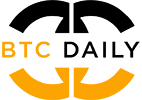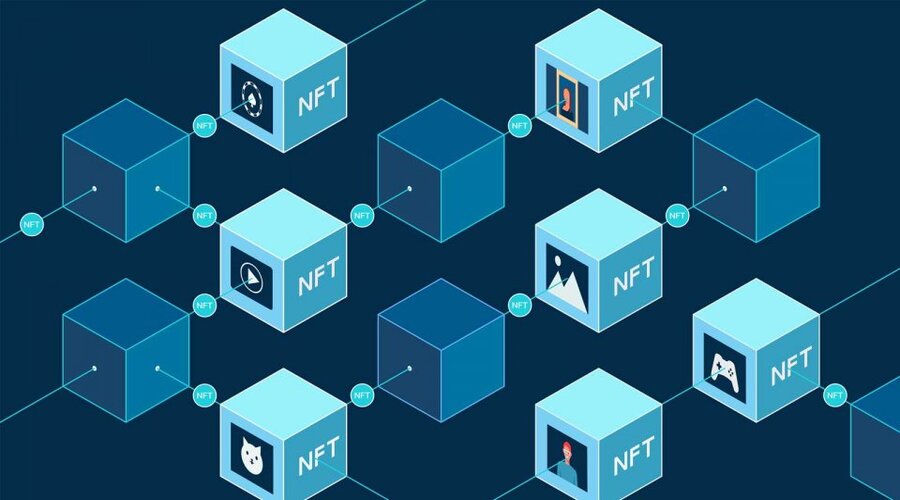Blockchain technology has paved the way for numerous innovations across various industries, and one such area where it has made a significant impact is in the realm of virtual asset marketplaces. In this article, we will delve into the world of blockchain-based virtual asset marketplaces, exploring their benefits, use cases, challenges, and future prospects.
Introduction
Blockchain-based Virtual Asset Marketplaces: Defining the Future
Blockchain-based virtual asset marketplaces are online platforms where users can buy, sell, and trade virtual assets securely and transparently. These marketplaces utilize blockchain technology to facilitate peer-to-peer transactions, ensuring trust, and eliminating the need for intermediaries.
The virtual asset market has experienced tremendous growth in recent years. With the rise of digital currencies, non-fungible tokens (NFTs), and virtual goods, the demand for efficient and trustworthy platforms to transact these assets has surged. Blockchain-based virtual asset marketplaces have emerged as the solution to meet this demand.
How Blockchain Technology Revolutionizes Virtual Asset Marketplaces
Decentralization, Transparency, and Trust
Blockchain technology operates on a decentralized network of computers, known as nodes, which collectively validate and record transactions. This decentralized nature ensures that no single entity has control over the marketplace, promoting transparency and reducing the risk of fraud or manipulation. Every transaction on the blockchain is recorded on a public ledger, providing an immutable and auditable history of asset ownership and transactions.
Security and Immutability
The cryptographic nature of blockchain technology ensures the security of virtual asset transactions. Each transaction is encrypted and linked to the previous transaction, forming a chain of blocks that are virtually impossible to alter or tamper with. This immutability provides a high level of security for virtual asset owners, mitigating the risk of unauthorized changes or theft.
Smart Contracts and Automation
Smart contracts, self-executing agreements encoded on the blockchain, play a vital role in blockchain-based virtual asset marketplaces. These contracts automatically enforce the terms and conditions of a transaction, ensuring that both parties fulfill their obligations. By eliminating the need for intermediaries, smart contracts streamline the transaction process and reduce costs.
Benefits of Blockchain-Based Virtual Asset Marketplaces

Increased Trust and Reduced Fraud
One of the significant advantages of blockchain-based virtual asset marketplaces is the enhanced trust they offer. The decentralized nature of blockchain technology removes the need for intermediaries, reducing the risk of fraud or manipulation. Users can verify the authenticity and ownership of assets through transparent and auditable blockchain records, instilling confidence in the marketplace.
Global Accessibility and Inclusivity
Blockchain-based virtual asset marketplaces break down geographical barriers, enabling anyone with an internet connection to participate. Traditional asset markets often have restrictions based on location, but blockchain technology opens up global accessibility. This inclusivity allows individuals from all corners of the world to engage in the virtual asset economy, promoting financial inclusion.
Enhanced Liquidity and Efficiency
Blockchain-based virtual asset marketplaces offer improved liquidity and efficiency compared to traditional markets. With 24/7 availability and real-time settlement, users can quickly and seamlessly trade virtual assets. The removal of intermediaries and automation through smart contracts streamline the transaction process, reducing costs and increasing the speed of settlements.
Use Cases of Blockchain-Based Virtual Asset Marketplaces
Cryptocurrencies and Digital Tokens
Cryptocurrencies, such as Bitcoin and Ethereum, are among the most well-known applications of blockchain technology. These digital currencies are traded on blockchain-based virtual asset marketplaces, allowing users to buy, sell, and store them securely. Additionally, digital tokens built on blockchain platforms enable the representation and trading of various assets, including utility tokens, security tokens, and stablecoins.
Non-Fungible Tokens (NFTs)
Non-fungible tokens (NFTs) have gained significant attention in recent years, representing unique digital assets such as artwork, collectibles, and virtual real estate. Blockchain-based virtual asset marketplaces provide the infrastructure to create, buy, and sell NFTs, offering artists and collectors new opportunities in the digital realm.
Virtual Real Estate and Virtual Goods
Virtual worlds and gaming ecosystems have seen a surge in popularity, with users spending real money to acquire virtual real estate and goods. Blockchain-based virtual asset marketplaces enable the ownership and transfer of these virtual assets, allowing users to monetize their investments and create vibrant virtual economies.
Challenges and Considerations in Blockchain-Based Virtual Asset Marketplaces
Scalability and Transaction Speed
One of the significant challenges faced by blockchain-based virtual asset marketplaces is scalability. As the number of users and transactions increases, the blockchain network’s capacity to process and verify transactions may become constrained. Scalability solutions, such as layer 2 protocols and sharding, are being developed to address this issue and improve transaction speed.
Regulatory and Legal Concerns
The regulatory landscape surrounding blockchain-based virtual asset marketplaces is still evolving. Governments and regulatory bodies are grappling with how to classify and regulate virtual assets, which can present challenges and uncertainty for market participants. Achieving a balance between innovation and consumer protection is crucial for the long-term success of these marketplaces.
User Education and Adoption
Blockchain technology and virtual asset marketplaces can be complex for new users to understand and navigate. Educating users about the benefits, risks, and mechanics of blockchain-based virtual asset transactions is essential to drive adoption. User-friendly interfaces and intuitive experiences are necessary to make these marketplaces accessible to a broader audience.
Future Prospects and Innovations in Blockchain-Based Virtual Asset Marketplaces
Interoperability Between Different Marketplaces
Interoperability between blockchain-based virtual asset marketplaces is a crucial aspect for future development. Seamless integration and transferability of assets between different platforms would enhance liquidity and enable users to access a wider range of assets and markets.
Integration with Emerging Technologies (AI, IoT)
The integration of blockchain-based virtual asset marketplaces with emerging technologies such as artificial intelligence (AI) and the Internet of Things (IoT) opens up new possibilities. AI can assist in analyzing market trends and providing personalized recommendations, while IoT can enable the tokenization of physical assets and facilitate automated transactions.
Evolution of Decentralized Finance (DeFi) Ecosystem
Decentralized finance (DeFi) is a rapidly growing sector within the blockchain space. Blockchain-based virtual asset marketplaces can play a pivotal role in the DeFi ecosystem by enabling the seamless integration of decentralized lending, borrowing, and trading platforms. This integration can further democratize financial services and empower individuals to have control over their assets and investments.
Ensuring Security in Blockchain-Based Virtual Asset Marketplaces
Security is of utmost importance in blockchain-based virtual asset marketplaces to protect users’ assets and transactions. Blockchain technology itself provides inherent security features, such as cryptographic encryption and immutability. However, additional measures can be implemented to enhance security:
- Multi-factor authentication: Implementing multi-factor authentication adds an extra layer of security by requiring users to provide multiple forms of identification, such as a password and a unique verification code sent to their mobile device.
- Cold storage solutions: Storing virtual assets in offline wallets, also known as cold storage, provides increased security as it is not connected to the internet and therefore less susceptible to hacking attempts.
- Auditing and transparency: Regular audits of blockchain-based virtual asset marketplaces can help identify potential vulnerabilities and ensure compliance with security standards. Transparency in disclosing security practices and protocols enhances trust among users.
- Secure smart contract development: Smart contracts are susceptible to vulnerabilities if not properly developed and audited. Thorough testing and auditing of smart contracts can help identify and fix any potential security loopholes.
The Role of Decentralized Governance in Virtual Asset Marketplaces
Decentralized governance plays a significant role in blockchain-based virtual asset marketplaces, ensuring fair decision-making and alignment with community interests. Here’s how decentralized governance can be implemented:
- Decentralized Autonomous Organizations (DAOs): DAOs are entities governed by smart contracts, enabling community members to participate in decision-making processes. Voting rights are distributed among token holders, allowing them to influence the direction and policies of the virtual asset marketplace.
- Token-based voting systems: Token holders can use their voting power to propose and vote on various matters, such as platform upgrades, listing new assets, or changes to marketplace rules. This democratic approach ensures community involvement and decentralization of decision-making.
- Transparency and accountability: Decentralized governance requires transparency in decision-making and allocation of resources. Detailed records of proposals, votes, and outcomes should be accessible to all participants, promoting accountability and trust.
- Continuous improvement and iteration: Virtual asset marketplaces need to foster an environment of continuous improvement. This can be achieved through feedback mechanisms, community discussions, and regular updates based on the evolving needs and preferences of the users.
The Impact of Blockchain-Based Virtual Asset Marketplaces on Traditional Markets
Blockchain-based virtual asset marketplaces are not only transforming the virtual asset landscape but also impacting traditional markets in several ways:
- Increased liquidity and accessibility: Traditional markets often have high barriers to entry, such as geographical restrictions, regulatory requirements, and limited trading hours. Blockchain-based virtual asset marketplaces provide global accessibility, 24/7 trading, and increased liquidity, empowering individuals worldwide to participate in asset markets.
- Disintermediation and cost reduction: Traditional asset markets often involve multiple intermediaries, such as brokers, custodians, and clearinghouses, resulting in additional costs for participants. Blockchain-based virtual asset marketplaces eliminate the need for intermediaries, reducing costs and facilitating direct peer-to-peer transactions.
- Expansion of asset classes: Virtual asset marketplaces enable the trading of digital assets that were previously not easily tradable in traditional markets. This includes cryptocurrencies, NFTs, virtual real estate, and other tokenized assets, expanding the range of investment opportunities for individuals.
- Innovation in financial services: The emergence of blockchain-based virtual asset marketplaces has sparked innovation in financial services. Concepts like decentralized finance (DeFi) have gained traction, providing decentralized lending, borrowing, and yield-generating opportunities, all built on blockchain technology.
Conclusion
Blockchain-based virtual asset marketplaces are reshaping the way we transact and engage with virtual assets. With their decentralized, transparent, and secure nature, these marketplaces provide enhanced trust, global accessibility, and efficiency. While challenges and considerations exist, ongoing innovations and regulatory developments pave the way for a promising future for blockchain-based virtual asset marketplaces.






